The scientific name for Norman’s Lampeye Killifish is Poropanchax normani. It was named after John Roxborough Norman, a British ichthyologist who worked at the British Museum of Natural History in the early 20th century. Norman’s Lampeye is a small, peaceful species of freshwater fish. It belongs to the family Poeciliidae, which includes other popular aquarium fish like guppies, mollies, platies and swordtails.
Table of Contents
Norman’s Lampeye grows to a maximum size of about 1.2 inches (3 cm) for males and 1.4 inches (3.5 cm) for females. The males are more colorful, with iridescent blue-green scales on their sides that shimmer under aquarium lighting. Females are larger and plumper but less colorful. Both have the signature large eyes of lampeye killifish.
In the aquarium trade, P. normani are sometimes sold under the names Norm’s Lampeye, Norman’s Lampeye Killi, or Blue Lampeye. They make an excellent addition to peaceful community tanks with similarly-sized fish. Norman’s Lampeye do best in heavily planted tanks that mimic their natural habitat. They prefer subdued lighting and dark substrates. Floating plants are appreciated as Norman’s Lampeye like to hang out near the water surface.
As micropredators, Norman’s Lampeye have upturned mouths suited for feeding on small invertebrates and insect larvae at the water surface. In the aquarium, they readily accept most dried, frozen and live foods like daphnia, cyclops, and baby brine shrimp. Feed several small meals throughout the day rather than one large feeding.
Norman’s Lampeye are typically found in the shallow, heavily vegetated edges of slow-moving rivers and streams in West Africa. Their natural range spans from Gambia to Cameroon. They tend to congregate in large groups near the water surface where they hunt for insect larvae and small crustaceans among the vegetation.
What makes Norman’s Lampeye especially interesting is their unusual eye structure. Their eyes are much larger in proportion to their bodies compared to most other fish. This adaptation helps them locate tiny prey in their dimly lit habitats. Under a microscope, their eyes have a complex pattern of reflective layers that look almost like fiber optics!
While Norman’s Lampeye are generally peaceful, the males can be territorial with each other, especially in smaller tanks. For this reason, it’s best to keep them in groups with at least two females for each male. A 10 gallon (38 liter) aquarium could comfortably house 6-8 individuals. Tankmates should be chosen carefully as Norman’s Lampeye may be outcompeted for food by faster, more boisterous fish. Good companions include other West African species like dwarf Pelvicachromis and small Synodontis catfish.
Breeding Norman’s Lampeye is relatively easy but raising the tiny fry can be a challenge. Like other killifish, they scatter their eggs among fine-leaved plants. Providing thick clumps of java moss or spawning mops will encourage breeding behavior. However, the eggs and fry are very sensitive to water conditions. Frequent small water changes and infusoria-grade foods are essential for the first few weeks until the fry are large enough to accept baby brine shrimp.
While Norman’s Lampeye Killifish may not be as popular as their larger killifish cousins, these peaceful micropredators are a joy to observe in a well-planted aquarium. With their shimmering colors, unusual upturned mouths, and oversized eyes, they are sure to catch the attention of both beginning and experienced fish keepers alike. By providing them with a suitably decorated tank and an appropriate diet, you can enjoy watching their natural behaviors as they navigate their tiny world at the water’s surface.
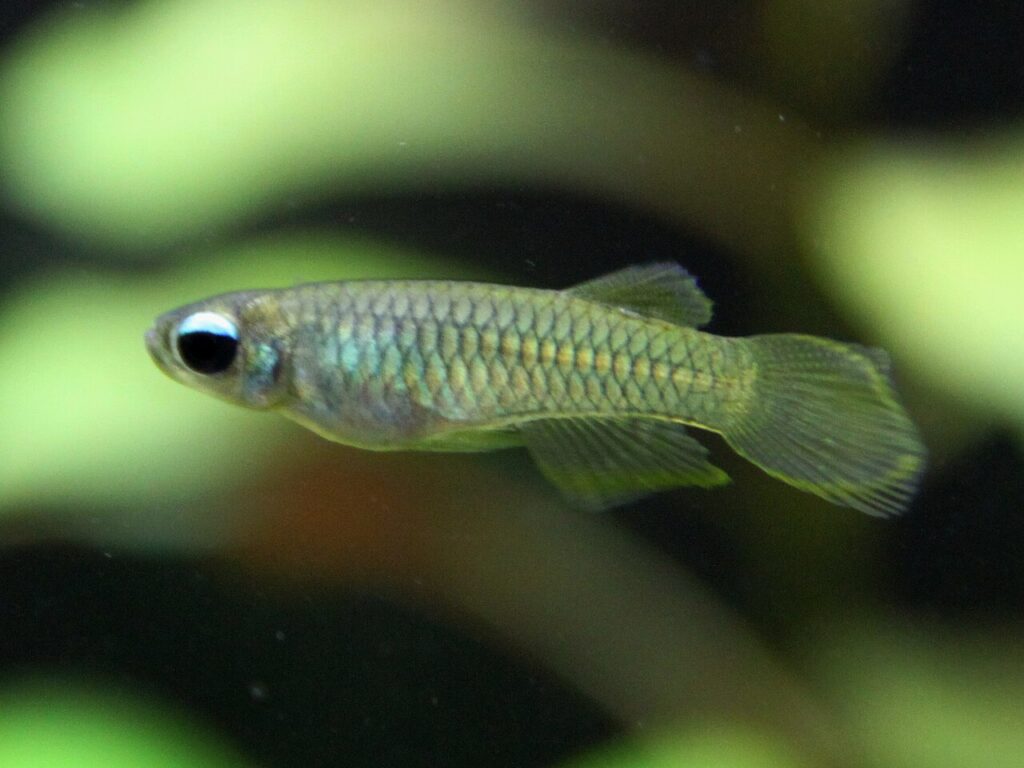
Norman’s Lampeye Killifish Key Information
Norman’s Lampeye Killifish (Poropanchax normani) is a small, colorful species native to West Africa. Males have iridescent blue-green scales that shimmer under aquarium lighting, while females are slightly larger and less colorful. Both sexes have the characteristic large eyes of lampeye killifish, which help them locate tiny prey in their dimly lit habitats.
| Family | Poeciliidae |
| Origin | West Africa (Gambia to Cameroon) |
| Price | $5 – $10 per pair |
| Common Names | Norm’s Lampeye, Norman’s Lampeye Killi, Blue Lampeye |
| Variants | None known |
| Ideal Tank Size | 10 gallons (38 liters) for a small group |
| Water Parameters | Temperature: 72-79°F (22-26°C), pH: 6.0-7.5, Hardness: 5-15 dGH |
| Lifespan | 3-5 years |
| Full Size | Males: 1.2 inches (3 cm), Females: 1.4 inches (3.5 cm) |
| Natural Environment | Shallow, heavily vegetated edges of slow-moving rivers and streams |
| Behavior | Peaceful, but males can be territorial with each other |
| Habitat Preference | Top to mid-level dweller, prefers heavily planted tanks with floating vegetation |
| Aquarium Decoration | Densely planted with dark substrate and subdued lighting |
| Ideal Tank Mates | Other peaceful, similarly-sized fish like small West African Pelvicachromis and Synodontis catfish |
| Fish to Avoid | Large, boisterous fish that may outcompete them for food |
| Best Foods/Diet | Small live, frozen, or dry foods like daphnia, cyclops, and baby brine shrimp; feed several small meals throughout the day |
| Disease | Susceptible to common aquarium diseases if water quality is poor |
| Sex-switch | No sex reversal observed |
| Gender Differences | Males are more colorful with iridescent scales; females are larger and less colorful |
| Care Level | Easy to moderate; requires a well-maintained, heavily planted tank |
| Breeding Level | Moderate; relatively easy to breed but raising the tiny fry can be challenging due to their sensitivity to water conditions and need for infusoria-grade foods until they can accept larger foods |
Ideal Tank Mates for Norman’s Lampeye Killifish
When selecting tank mates for Norman’s Lampeye Killifish (Poropanchax normani), it’s essential to choose species that share similar water parameters, temperament, and habitat preferences. Ideal tank mates should be peaceful, similarly-sized, and not compete for the same food sources or swimming space. Here are 10 excellent tank mates for Norman’s Lampeye Killifish, each with unique characteristics that make them compatible:
1. Dwarf Pelvicachromis (Pelvicachromis taeniatus)
Dwarf Pelvicachromis, also known as Nigerian Red Kribensis, are small, colorful cichlids from West Africa. They share similar water parameters and habitat preferences with Norman’s Lampeye Killifish, making them an excellent choice for a community tank. These peaceful fish are substrate-dwelling and form monogamous pairs, providing interesting behavior to observe without interfering with the top-dwelling lampeyes.
| Common/Market Names | Nigerian Red Kribensis, Striped Kribensis |
| Price Range | $8 – $15 per pair |
| Care Level | Easy to moderate |
| Behavior | Peaceful, substrate-dwelling, pair-forming |
| Life Span | 3-5 years |
| Max Size | 3 inches (7.5 cm) |
2. Celestial Pearl Danio (Danio margaritatus)
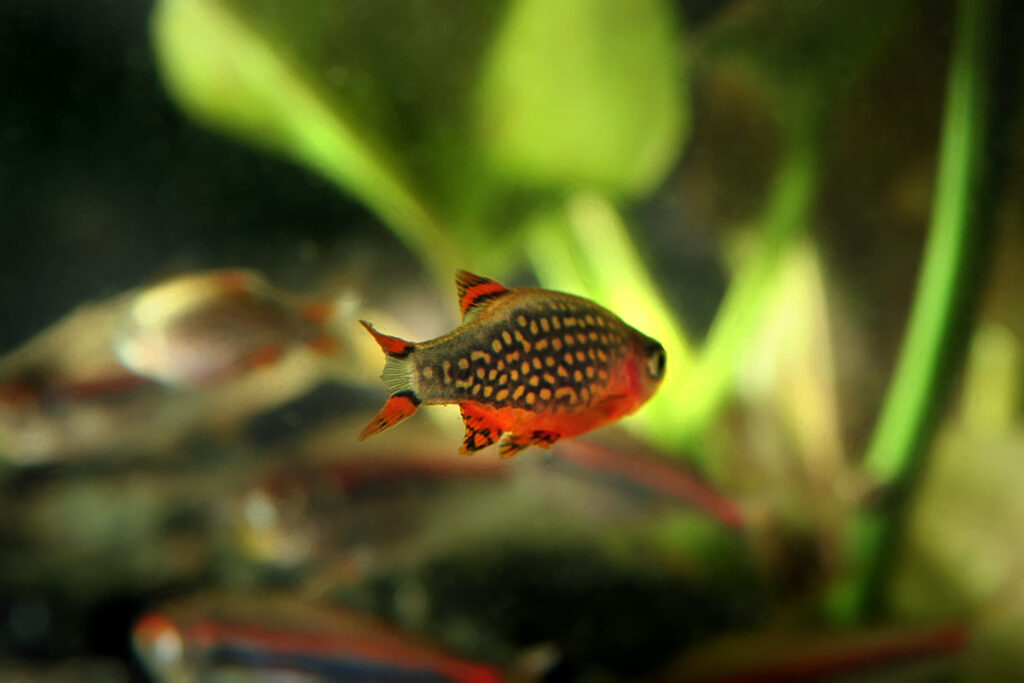
Celestial Pearl Danios, also known as Galaxy Rasboras, are tiny, iridescent fish from Southeast Asia. Although not from the same region as Norman’s Lampeye Killifish, they have similar water requirements and peaceful temperaments. These mid-level swimmers add a sparkle of color to the aquarium without competing with the lampeyes for space or food.
| Common/Market Names | Galaxy Rasbora, Microrasbora sp. “Galaxy” |
| Price Range | $5 – $10 per fish |
| Care Level | Easy |
| Behavior | Peaceful, schooling, mid-level swimmer |
| Life Span | 3-5 years |
| Max Size | 0.8 inches (2 cm) |
3. African Dwarf Frog (Hymenochirus boettgeri)
African Dwarf Frogs are unique, fully aquatic amphibians that can coexist peacefully with Norman’s Lampeye Killifish. These small, bottom-dwelling frogs have a gentle demeanor and are fun to watch as they hop along the substrate in search of food. They require similar water parameters to the lampeyes and won’t interfere with their swimming space.
| Common/Market Names | African Dwarf Frog, Zaire Dwarf Clawed Frog |
| Price Range | $3 – $6 per frog |
| Care Level | Easy |
| Behavior | Peaceful, bottom-dwelling, fully aquatic |
| Life Span | 5-7 years |
| Max Size | 1.5 inches (3.8 cm) |
4. Dwarf Pencilfish (Nannostomus marginatus)
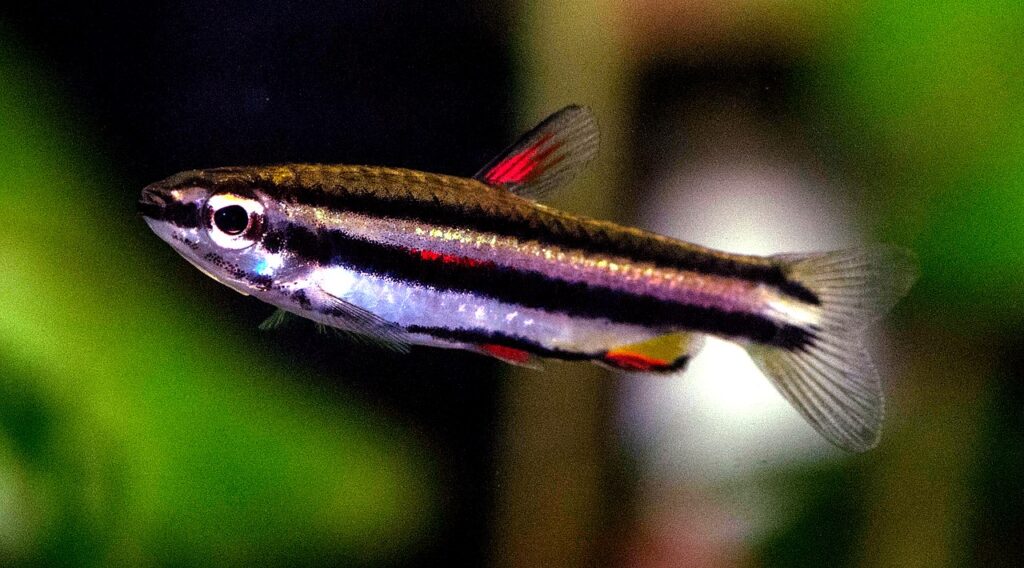
Dwarf Pencilfish are slender, peaceful fish from South America that make excellent tank mates for Norman’s Lampeye Killifish. Like the lampeyes, they prefer subdued lighting and densely planted aquariums. These mid-level swimmers have a unique color pattern and form loose schools, adding visual interest to the tank without competing with the lampeyes.
| Common/Market Names | Dwarf Pencilfish |
| Price Range | $4 – $8 per fish |
| Care Level | Easy |
| Behavior | Peaceful, schooling, mid-level swimmer |
| Life Span | 3-5 years |
| Max Size | 1.2 inches (3 cm) |
5. Pygmy Corydoras (Corydoras pygmaeus)
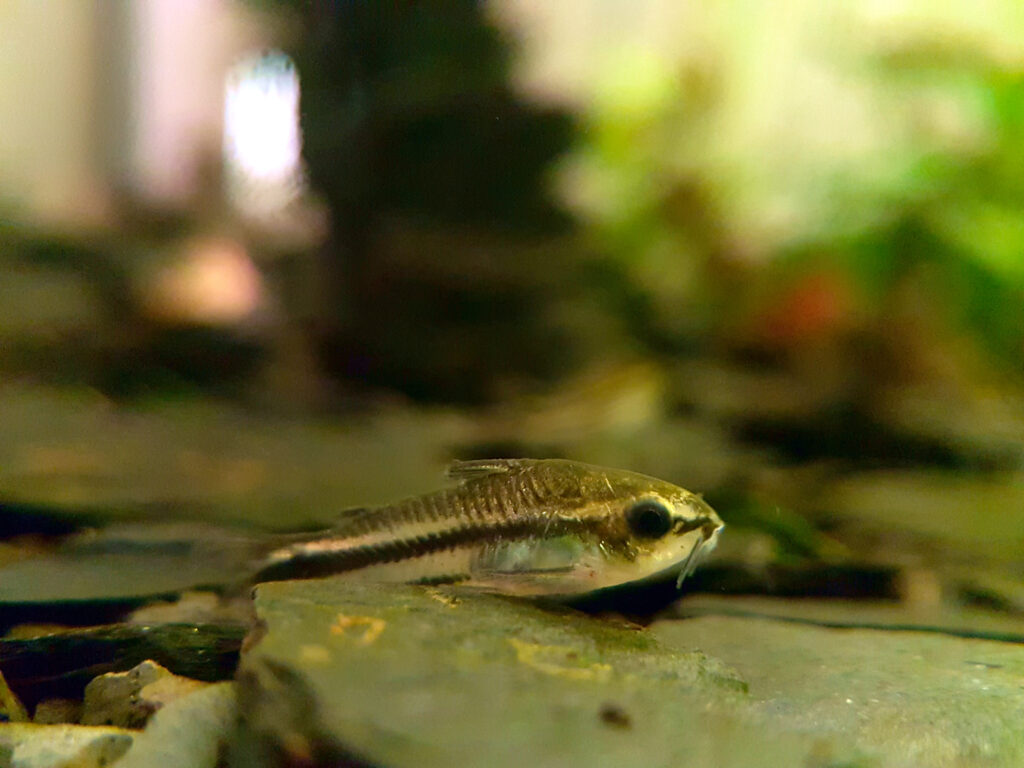
Pygmy Corydoras are tiny, peaceful catfish from South America that make great bottom-dwelling companions for Norman’s Lampeye Killifish. These diminutive scavengers help keep the substrate clean by foraging for leftover food and debris. They are social fish that should be kept in groups of at least six, creating an active and entertaining display in the lower levels of the aquarium.
| Common/Market Names | Pygmy Cory |
| Price Range | $3 – $6 per fish |
| Care Level | Easy |
| Behavior | Peaceful, social, bottom-dwelling |
| Life Span | 3-5 years |
| Max Size | 1 inch (2.5 cm) |
6. Ember Tetra (Hyphessobrycon amandae)
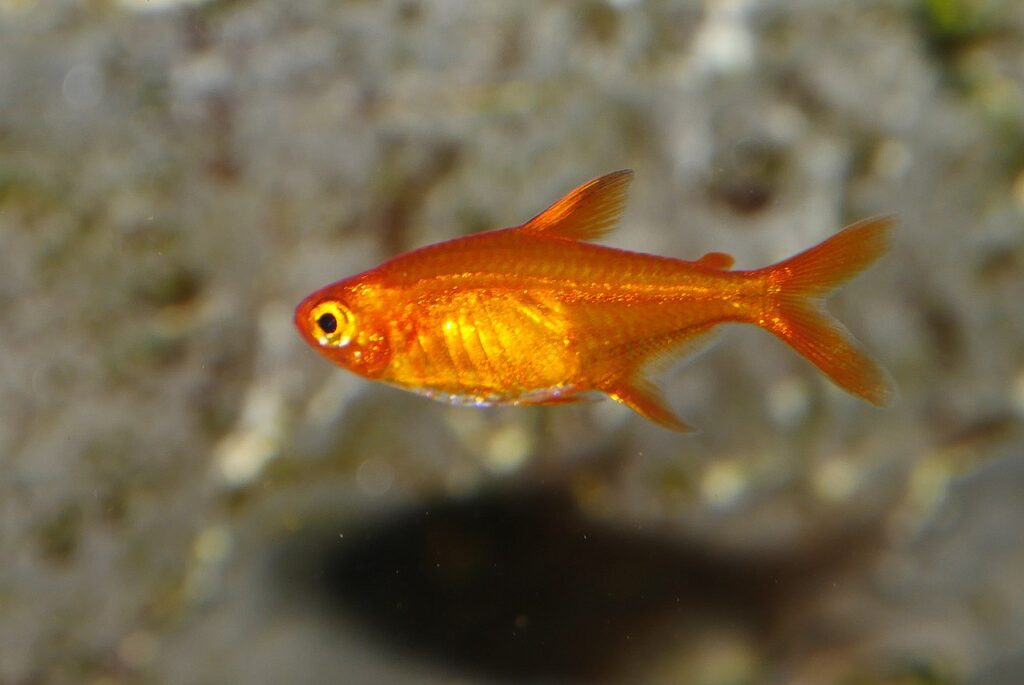
Ember Tetras are small, colorful fish from South America that make excellent tank mates for Norman’s Lampeye Killifish. These peaceful, schooling fish have a striking red-orange coloration that complements the iridescent blues and greens of the lampeyes. They occupy the mid-level of the aquarium and prefer similar water parameters, making them well-suited for a community tank.
| Common/Market Names | Ember Tetra, Amanda’s Tetra |
| Price Range | $2 – $4 per fish |
| Care Level | Easy |
| Behavior | Peaceful, schooling, mid-level swimmer |
| Life Span | 3-5 years |
| Max Size | 0.8 inches (2 cm) |
7. Sparkling Gourami (Trichopsis pumila)
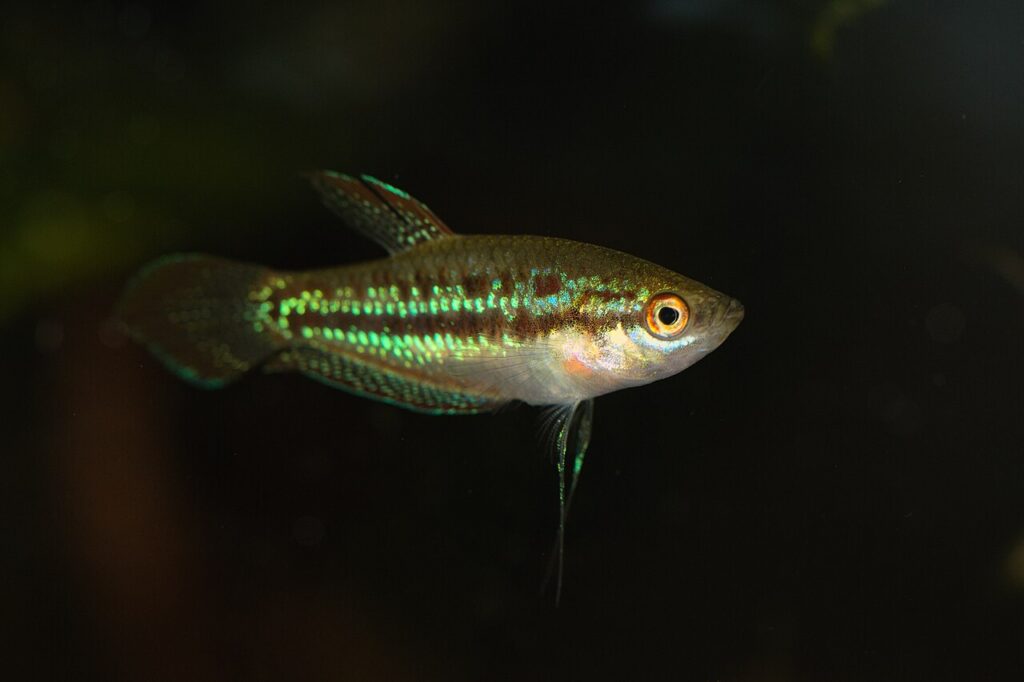
Sparkling Gouramis are tiny, labyrinth fish from Southeast Asia that share similar habitat preferences with Norman’s Lampeye Killifish. These peaceful, surface-dwelling fish have an iridescent sparkle and a gentle demeanor, making them a great addition to a heavily planted community tank. They can coexist harmoniously with the lampeyes without competing for food or swimming space.
| Common/Market Names | Sparkling Gourami, Pygmy Gourami |
| Price Range | $4 – $8 per fish |
| Care Level | Easy to moderate |
| Behavior | Peaceful, surface-dwelling, labyrinth fish |
| Life Span | 3-5 years |
| Max Size | 1.5 inches (3.8 cm) |
8. Otocinclus Catfish (Otocinclus spp.)
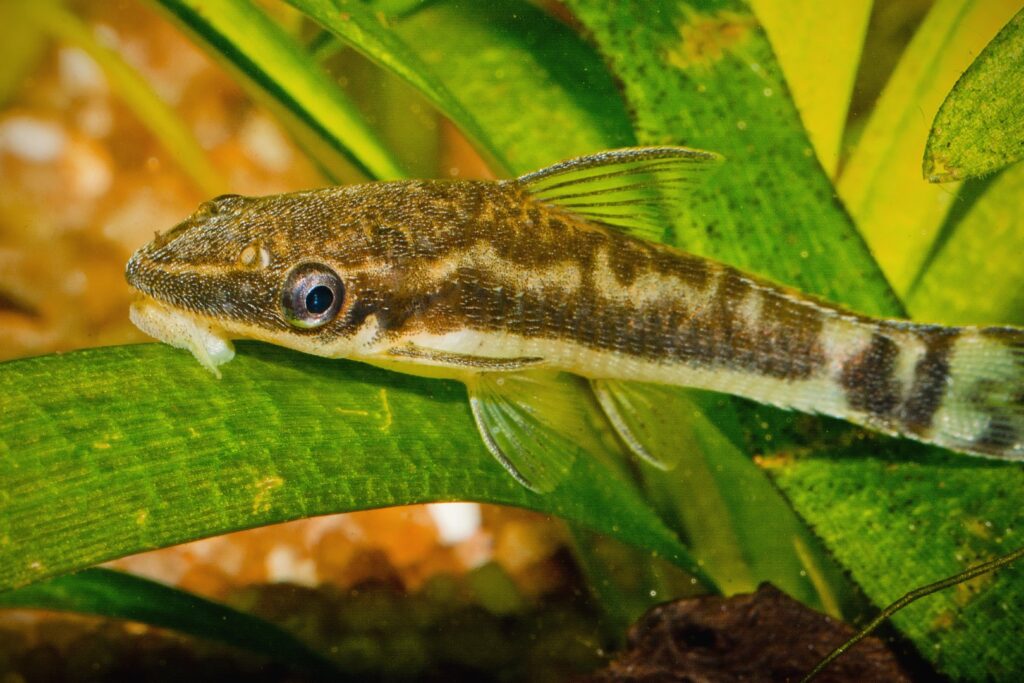
Otocinclus Catfish are small, algae-eating fish from South America that make great tank mates for Norman’s Lampeye Killifish. These peaceful bottom-dwellers help keep the aquarium clean by grazing on algae and biofilm. They are social fish that should be kept in groups of at least three, and their small size and gentle nature make them compatible with the lampeyes.
| Common/Market Names | Oto, Dwarf Suckermouth Catfish |
| Price Range | $2 – $5 per fish |
| Care Level | Easy to moderate |
| Behavior | Peaceful, social, bottom-dwelling, algae-eater |
| Life Span | 3-5 years |
| Max Size | 1.5 inches (3.8 cm) |
9. Dwarf Rasbora (Boraras spp.)
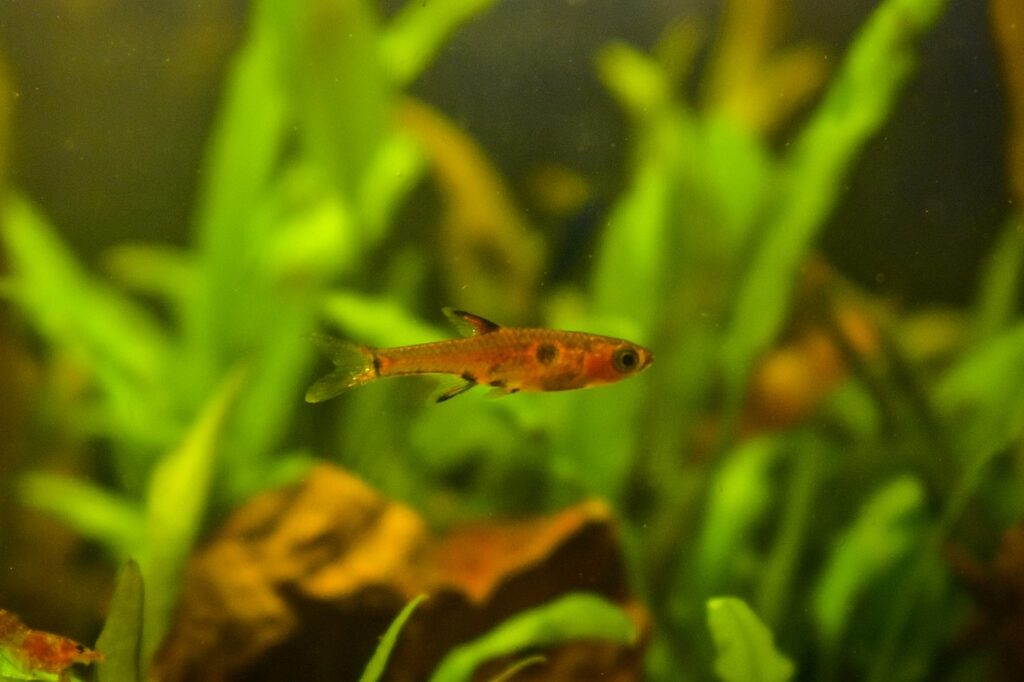
Dwarf Rasboras are tiny, colorful fish from Southeast Asia that make excellent tank mates for Norman’s Lampeye Killifish. There are several species available, such as Chili Rasboras (B. brigittae) and Phoenix Rasboras (B. merah), each with its own unique coloration. These peaceful, schooling fish occupy the mid-level of the aquarium and prefer similar water parameters to the lampeyes.
| Common/Market Names | Chili Rasbora, Phoenix Rasbora, Mosquito Rasbora |
| Price Range | $2 – $4 per fish |
| Care Level | Easy |
| Behavior | Peaceful, schooling, mid-level swimmer |
| Life Span | 2-4 years |
| Max Size | 0.8 inches (2 cm) |
10. Pygmy Hatchetfish (Carnegiella myersi)
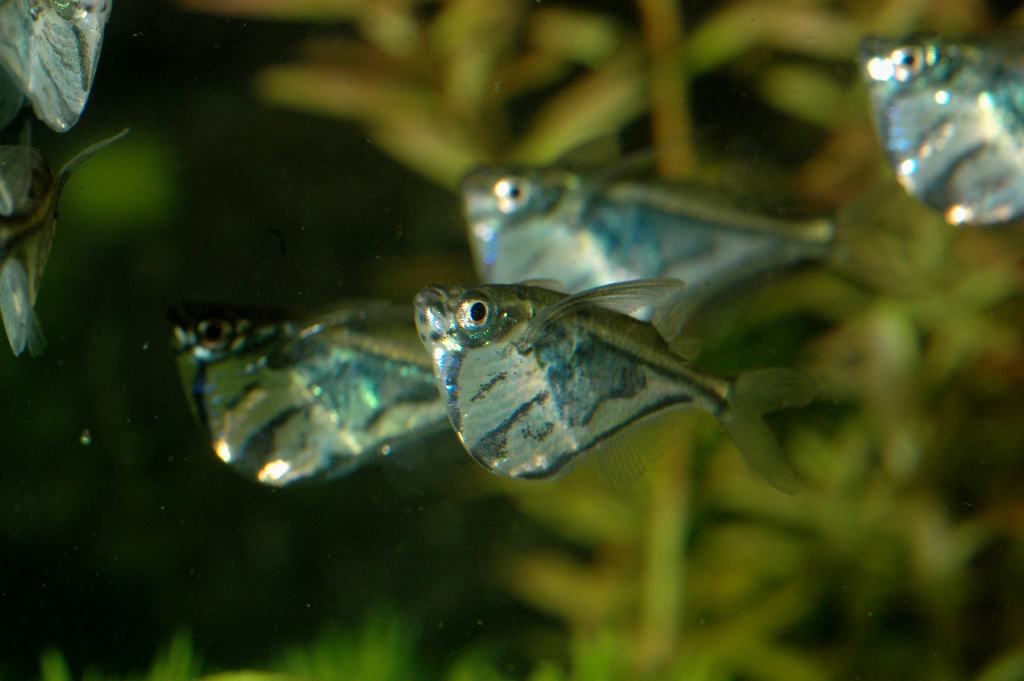
Pygmy Hatchetfish are small, surface-dwelling fish from South America that share similar habitat preferences with Norman’s Lampeye Killifish. These peaceful fish have a unique shape and swimming style, often seen darting just below the water’s surface in search of food. They are schooling fish that should be kept in groups of at least six, and their gentle nature makes them compatible with the lampeyes.
| Common/Market Names | Pygmy Hatchetfish, Myer’s Hatchetfish |
| Price Range | $4 – $8 per fish |
| Care Level | Easy to moderate |
| Behavior | Peaceful, schooling, surface-dwelling |
| Life Span | 3-5 years |
| Max Size | 1 inch (2.5 cm) |
FAQs about Norman’s Lampeye Killifish
How do I acclimate Norman’s Lampeye Killifish to my aquarium?
Acclimation is crucial to prevent shock from sudden changes in water parameters. Float the bag containing your new fish in the aquarium for 15-20 minutes to allow the temperature to equalize. Then, gradually add small amounts of aquarium water to the bag over the course of 30-45 minutes. Finally, gently release the fish into the aquarium.
How often should I feed my Norman’s Lampeye Killifish?
Feed your Norman’s Lampeye Killifish small amounts of food 2-3 times a day. Offering smaller, more frequent meals helps ensure that all fish have access to food and reduces the risk of overfeeding, which can lead to poor water quality.
Can I keep Norman’s Lampeye Killifish in a planted tank?
Yes, Norman’s Lampeye Killifish thrive in heavily planted tanks. Live plants provide hiding spots, help maintain water quality, and create a more natural environment for your fish. Choose plants like Java Moss, Anubias, and Cryptocoryne species that can tolerate the soft, slightly acidic water preferred by these killifish.
How do I prevent my Norman’s Lampeye Killifish from jumping out of the aquarium?
Norman’s Lampeye Killifish are known for their jumping ability, so it’s important to keep a tight-fitting lid on your aquarium. Ensure that there are no gaps around equipment or openings where the fish might escape. You can also lower the water level slightly to create a larger gap between the water surface and the lid.
Can I keep Norman’s Lampeye Killifish with shrimp?
Yes, Norman’s Lampeye Killifish can coexist peacefully with small, peaceful shrimp species like Cherry Shrimp (Neocaridina davidi) or Amano Shrimp (Caridina multidentata). However, keep in mind that very young shrimp or shrimplets may be seen as food by the killifish.
How can I tell if my Norman’s Lampeye Killifish are stressed?
Signs of stress in Norman’s Lampeye Killifish include loss of appetite, lethargy, hiding, rapid gill movement, and a loss of color. Stress can be caused by poor water quality, improper tank mates, or sudden changes in the aquarium environment. If you notice these signs, check your water parameters and make any necessary adjustments.
How often should I perform water changes for my Norman’s Lampeye Killifish tank?
Perform weekly water changes of 10-20% to maintain good water quality. Use a gravel vacuum to remove debris and uneaten food from the substrate. Be sure to treat the new water with a dechlorinator before adding it to the aquarium to remove harmful chlorine and chloramines.
Can I breed Norman’s Lampeye Killifish in my home aquarium?
Yes, breeding Norman’s Lampeye Killifish is possible in a home aquarium setting. Provide a heavily planted tank with a dark substrate and subdued lighting to encourage spawning. The fish will scatter their eggs among the plants, so having fine-leaved plants or spawning mops is essential. Once the eggs hatch, feed the fry infusoria or commercially prepared fry food until they are large enough to accept baby brine shrimp.